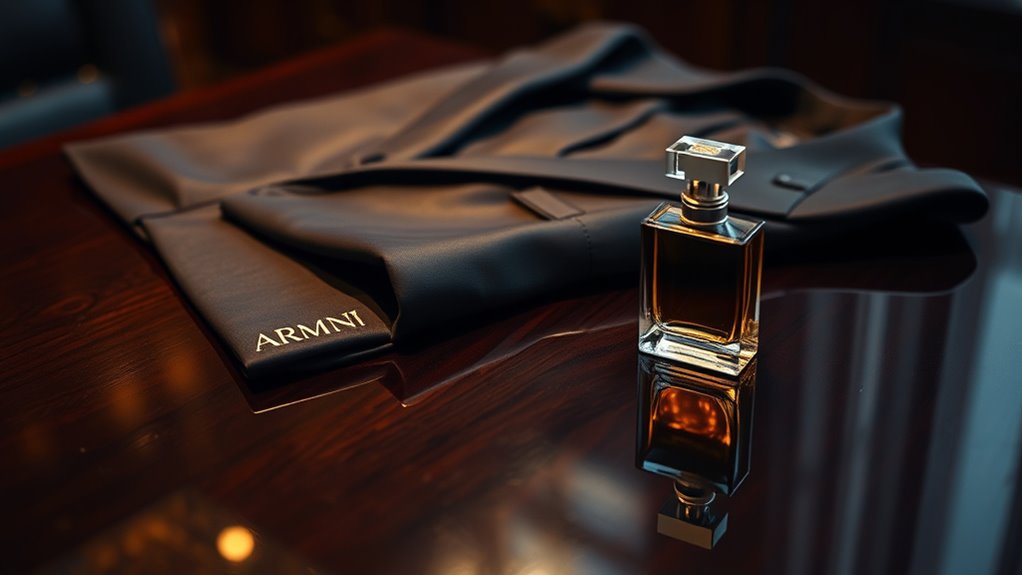According to reports, the founder’s will suggests that the rights to Armani could eventually transfer to major companies like LVMH or L’Oréal. This signals the potential for a significant shift in ownership and control, especially as the brand plans to sell a large stake within 18 months. If you want to understand how this change might happen and what it means for Armani’s future, there’s more to uncover below.

Giorgio Armani’s recent will could reshape the luxury brand’s ownership, as it mandates the sale of a 15% stake within 18 months of his death. This directive signals a significant shift for a brand that has long valued independence and self-control. The will specifies that the preferred buyers are LVMH, EssilorLuxottica, or L’Oréal, or similar-tier companies, indicating the founder’s desire for strategic partners with substantial influence in the luxury and beauty sectors. If the heirs agree, the selected buyer could increase their stake to a majority after three years, positioning the brand for potential future consolidation. Alternatively, Armani’s estate might opt for a public listing, which would allow broader ownership but also introduce new market dynamics and valuation considerations. The company’s valuation, estimated by analysts at up to $8.2 billion, underscores its significant market value and appeal for large conglomerates. A recent valuation by industry experts confirms the brand’s strong market position, making it a highly attractive target for potential buyers. It remains to be seen how this potential sale could affect the longevity of the brand’s heritage in the competitive luxury landscape.
This move marks a departure from Armani’s historical stance of maintaining full independence. For over five decades, the founder resisted acquisition attempts and preferred to keep control firmly within his family and corporate structure. Despite periodic interest from rival luxury groups, Armani’s commitment to independence became a defining aspect of its brand identity, emphasizing creative freedom and Italian craftsmanship rather than corporate mergers. The decision to sell a sizable stake at this stage signals a strategic shift, possibly driven by the need for capital, succession planning, or a desire to leverage the resources of a global conglomerate to expand further. It’s a bold move that surprises industry watchers, as Armani’s past decisions demonstrated a clear reluctance to compromise the brand’s autonomy.
Post-mortem, the ownership structure remains complex. Armani’s shares include Class A and Class F stocks, with F shares granting enhanced voting rights, including veto powers over key decisions like creative direction. This structure ensures that strategic control remains in the hands of select shareholders, even as external investors acquire stakes. Importantly, the will transfers ownership of personal assets and shares but does not affect the company’s intellectual property rights, which are owned by Armani S.p.A. and licensed out through deals with partners like L’Oréal for fragrances or other categories. These licensing agreements generate ongoing revenue but are separate from the founder’s estate and do not transfer with his personal assets.
Ownership structure remains complex with dual-class shares, ensuring strategic control despite external stakes and licensing agreements.
Beyond ownership and licensing, Armani’s cultural legacy endures through initiatives like Armani/Silos, a permanent exhibition space showcasing the designer’s creative work and Italy’s cultural heritage. This space, owned by the company, highlights that Armani’s influence extends beyond fashion to cultural preservation, reinforcing the brand’s long-term legacy. With suitors like LVMH, L’Oréal, and EssilorLuxottica on the horizon, the future of Armani’s rights and assets could soon enter a new chapter, one shaped by strategic alliances and evolving ownership structures.
Frequently Asked Questions
What Are the Specific Assets Included in Armani’s Rights?
You get access to Armani’s core assets, including the iconic brand name, trademarks, and design patents that define its luxury identity. You also acquire product lines like menswear, womenswear, accessories, and fragrances, along with licensing rights and brand extensions. Additionally, the assets include retail stores, distribution networks, inventory, manufacturing contracts, and the company’s financial assets, all contributing to Armani’s reputation, profitability, and market presence.
How Does the Founder’s Will Specify Asset Distribution?
You see that the founder’s will outlines a structured asset distribution plan. It directs you to sell an initial 15% stake within 18 months, then transfer between 30% and 54.9% over three to five years to selected buyers like LVMH or L’Oréal. The will also establishes a foundation to oversee the process, ensuring Armani’s legacy remains protected while allowing for gradual ownership changes and strategic continuity.
Are There Legal Challenges to the Estate’s Distribution Plan?
Legal challenges could surface, especially over share sale timing, valuation, and voting rights. Disputes may develop among heirs or external bidders opposing the prescribed sale schedule or preferred buyers. Conflicts might also arise from governance ambiguities or differing desires for control. While detailed bylaws and trusted trustees aim to avert disagreements, legal litigations remain possible, particularly if disagreements over estate interpretation or valuation escalate or external interests challenge the established plan.
What Impact Might This Inheritance Have on the Fashion Industry?
This inheritance could substantially reshape the fashion industry by accelerating consolidation among luxury brands. You might see Armani integrated into bigger conglomerates like LVMH or L’Oréal, which could lead to increased competition, strategic collaborations, and expanded global reach. It may also influence consumer perceptions, product offerings, and pricing strategies, prompting rival brands to respond with M&A activity or new innovation efforts. Overall, it could redefine luxury market dynamics and brand positioning for years to come.
How Will the Rights Transfer if LVMH or L’Oréal Acquire Them?
Imagine the Armani flag waving as LVMH or L’Oréal takes the helm, guiding the brand into new horizons. You’ll see a gradual transfer, with at least 15% sold within 18 months, then more over five years, all while Armani’s foundation keeps a 30% stake. This guarantees brand integrity, blending legacy with innovation, as these luxury giants steer Armani’s future, respecting its heritage and expanding its global reach.
Conclusion
So, as you watch this battle unfold, remember it’s a clash not just of brands, but of legacy versus ambition. Armani’s timeless elegance stands in contrast to the corporate giants vying for his rights. In this game of influence, you see tradition meet modern power—where a founder’s will could spark a new chapter or cement a legacy. It’s a reminder that sometimes, the smallest decisions can reshape an empire’s future.









